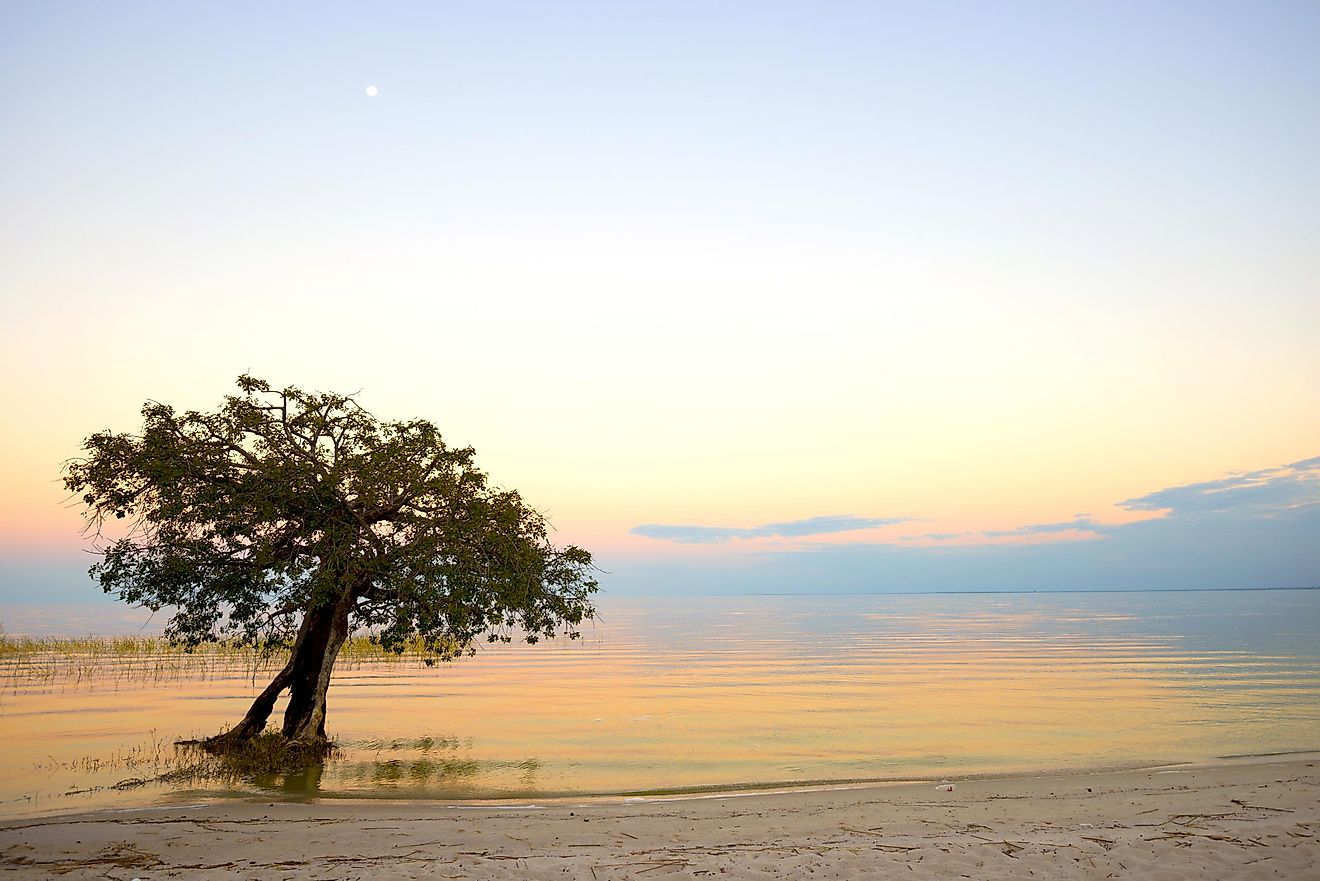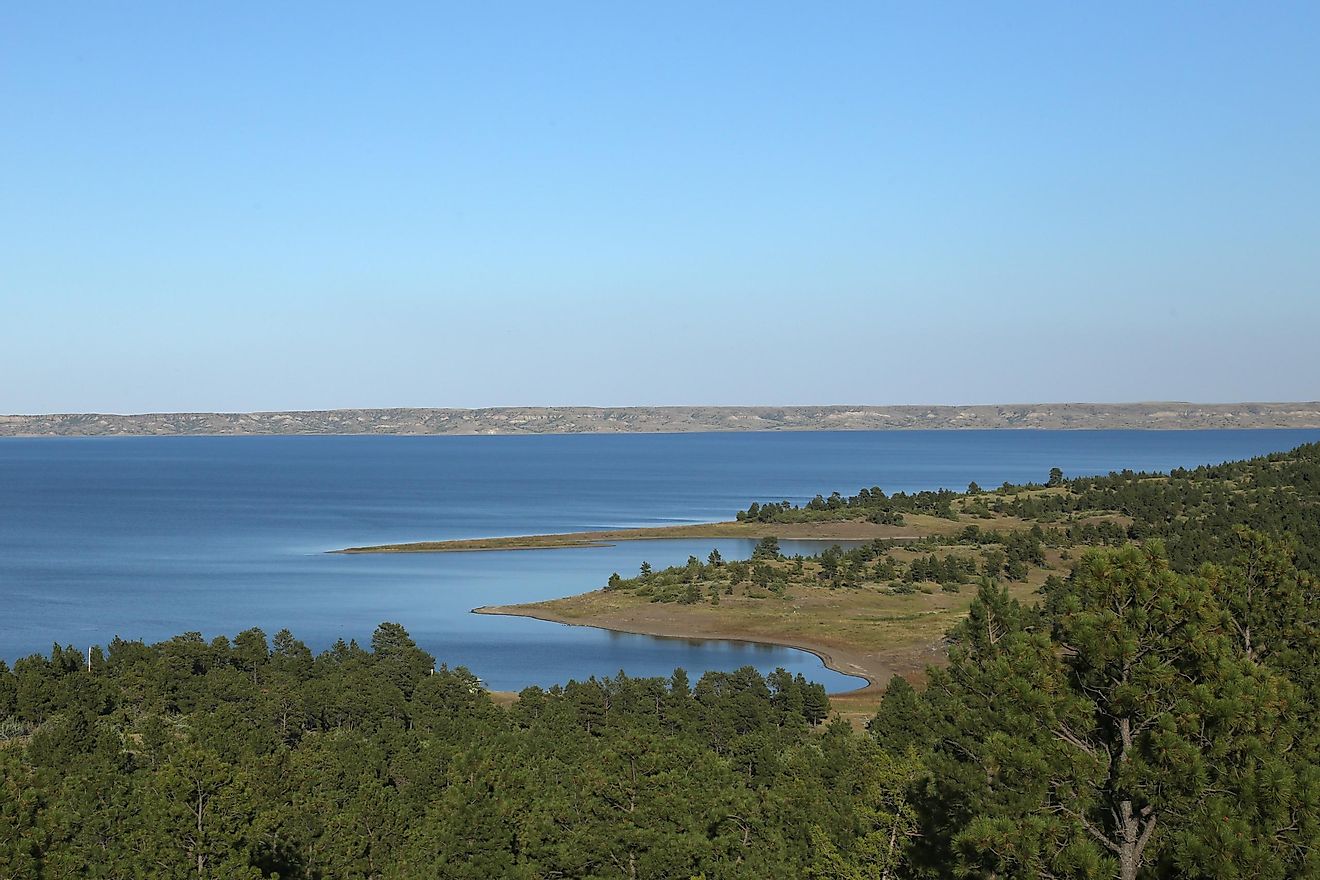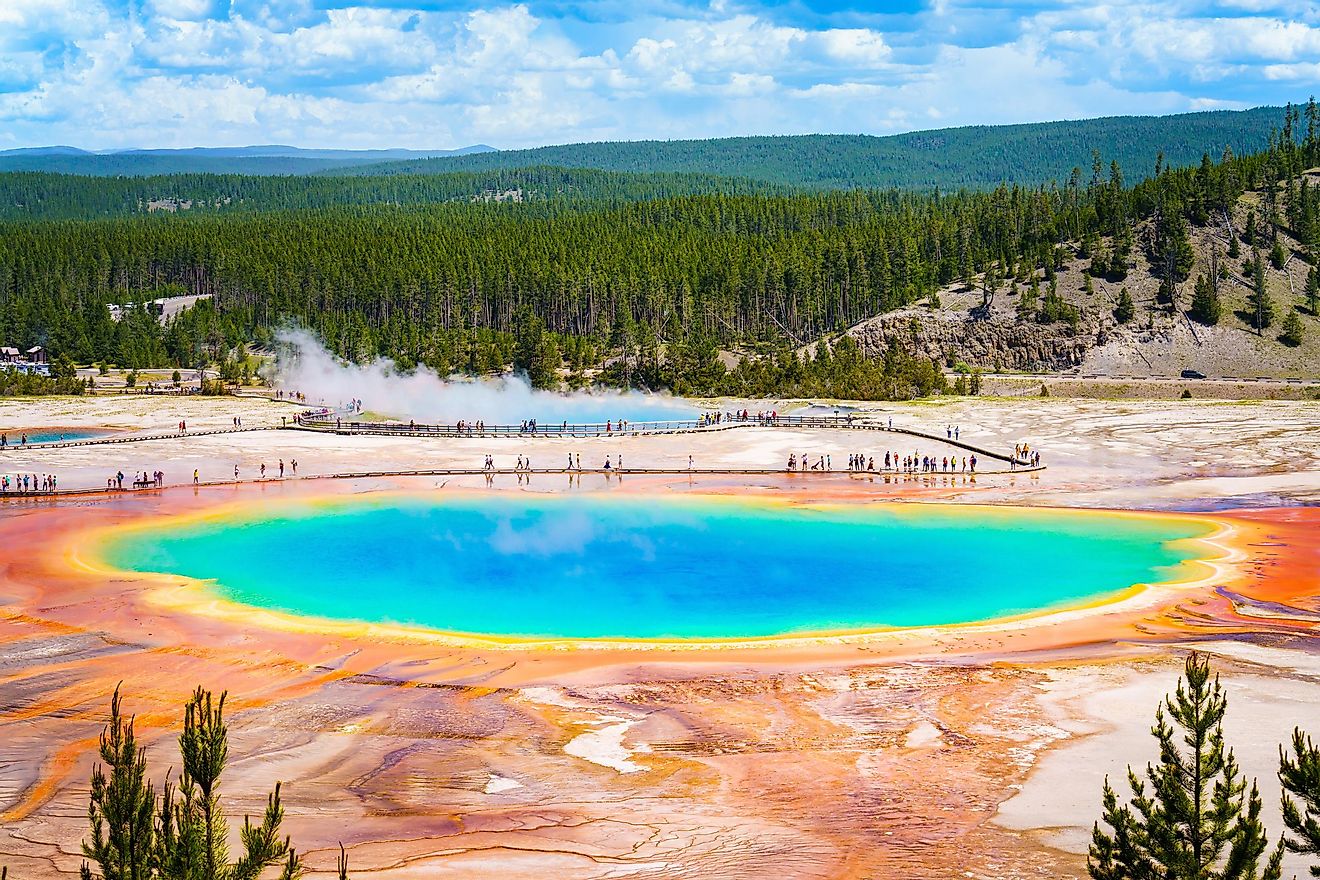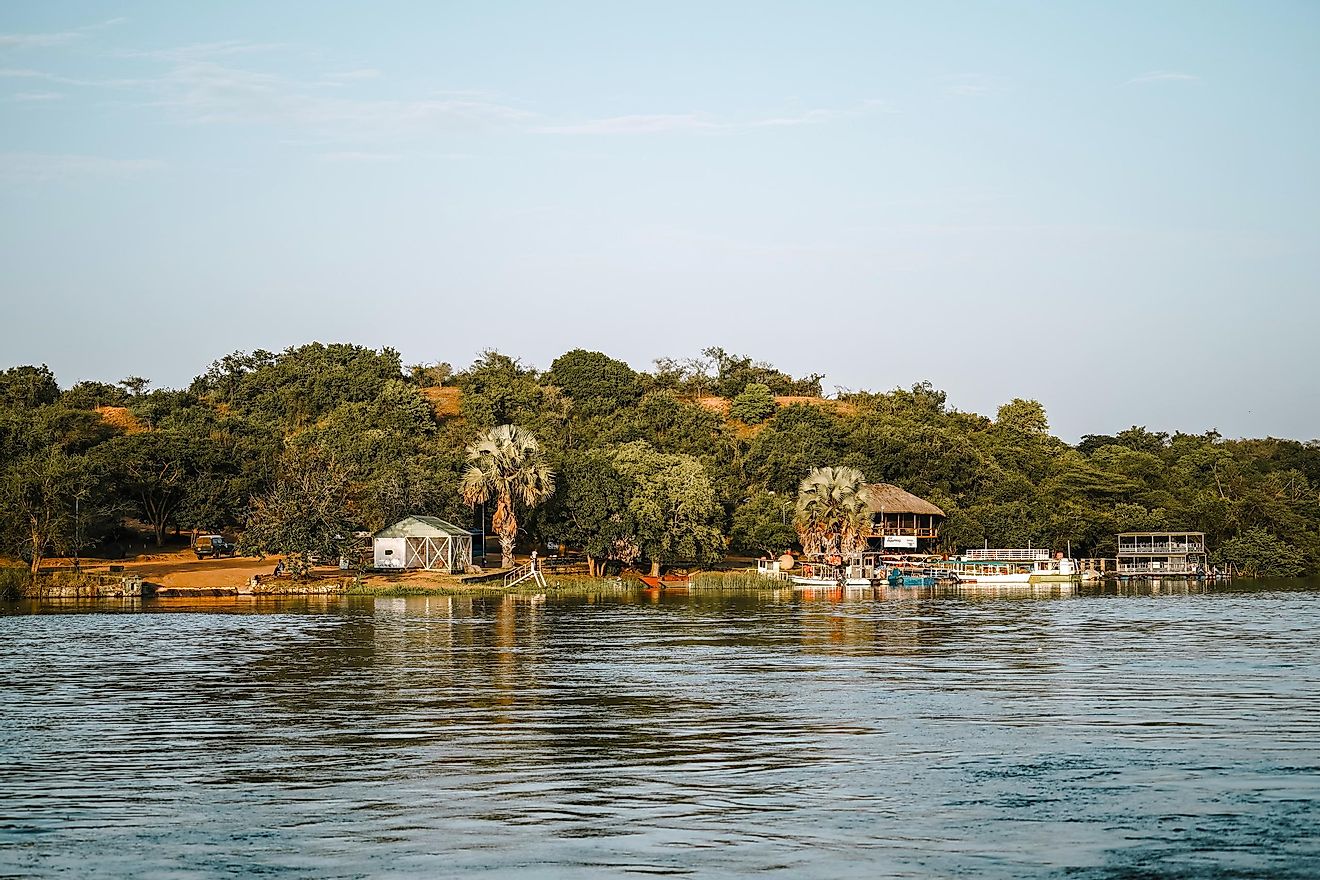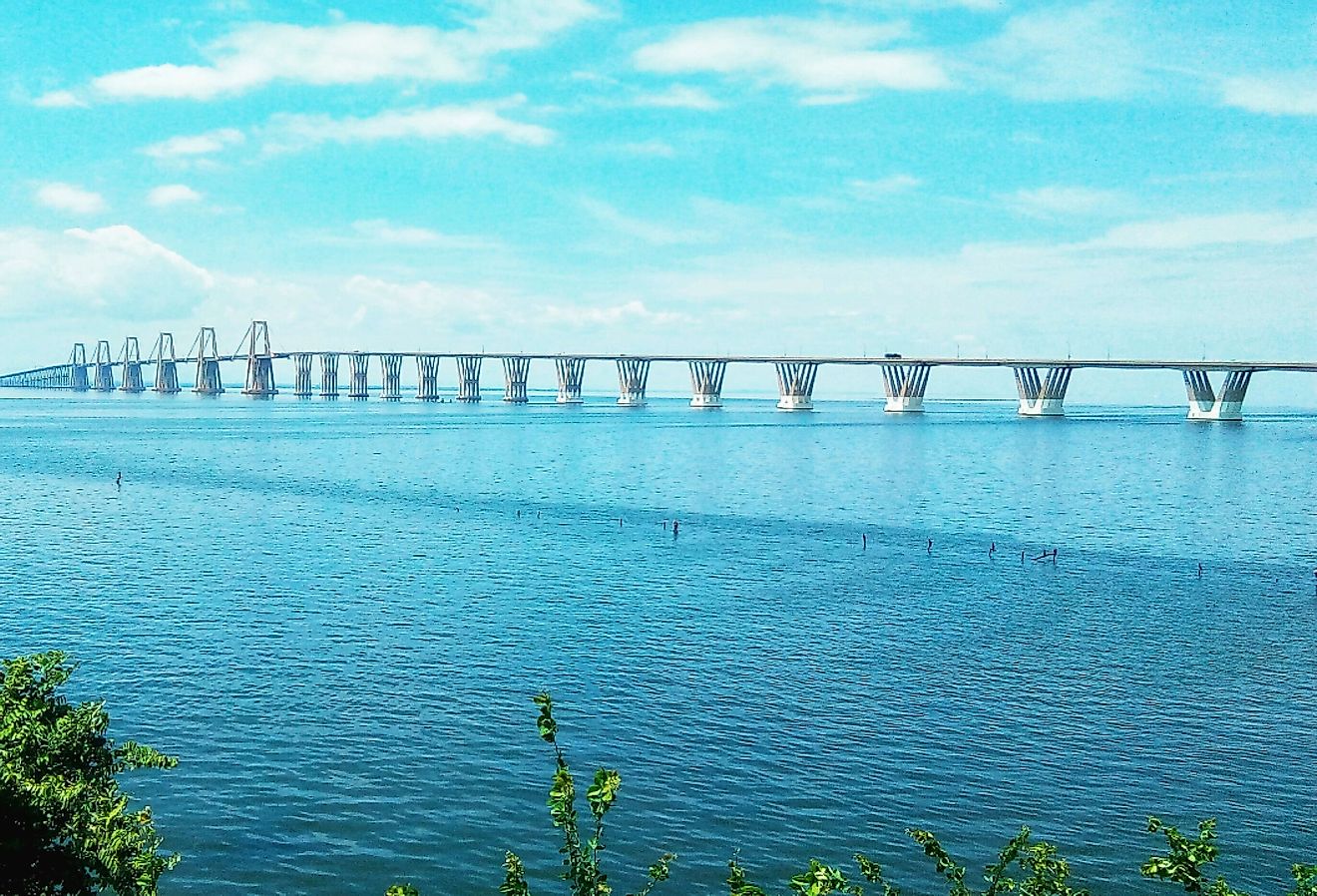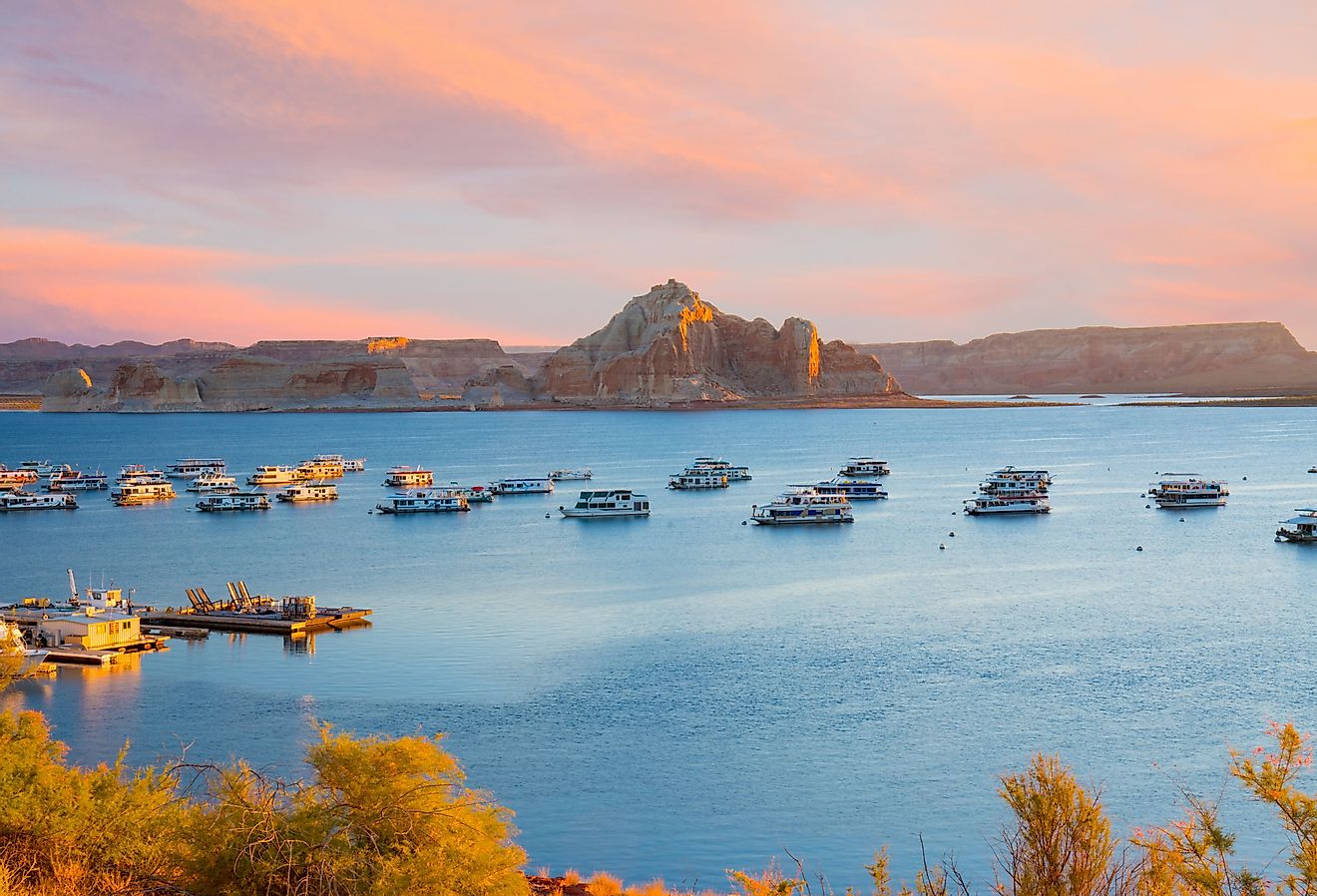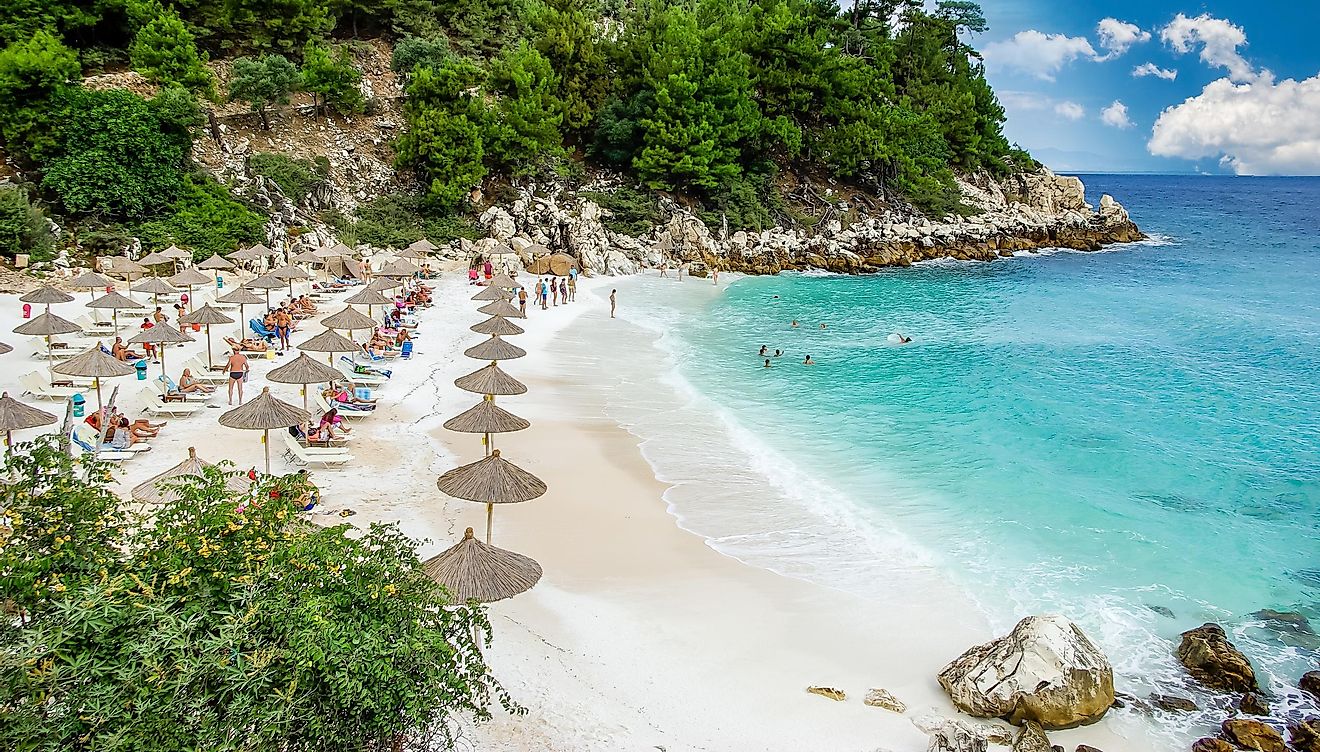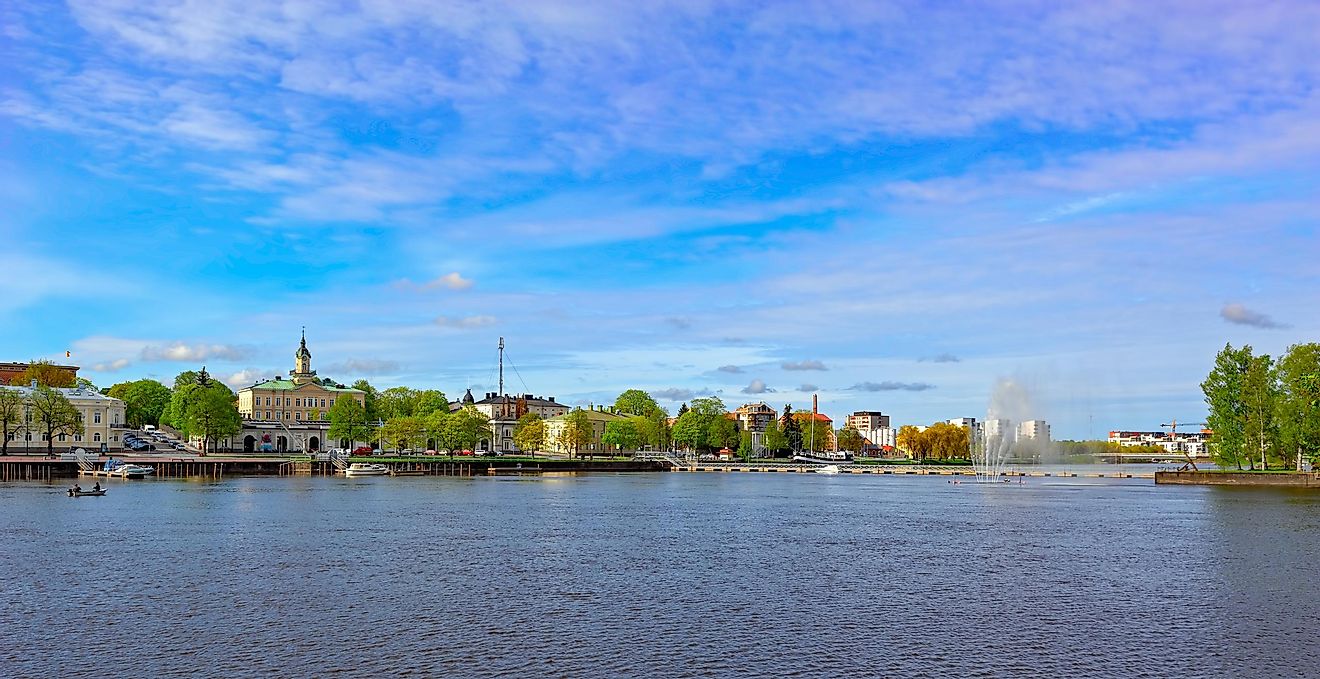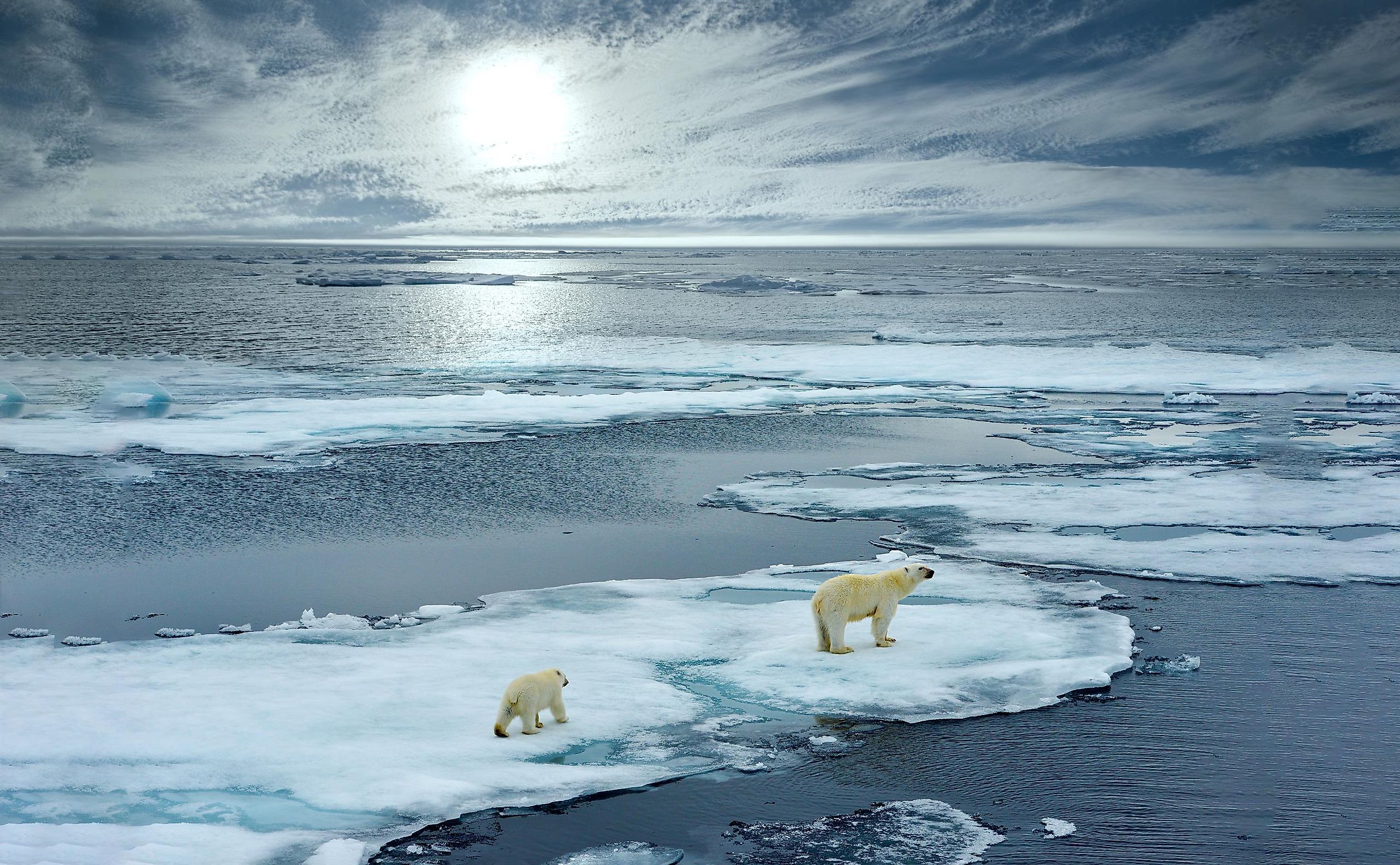
Sea Ice
Sea ice refers to a type of ice that is formed on the sea surface due to the freezing of seawater. Approximately 7% of the Earth’s surface and 12% of the world’s oceans are covered by sea ice. A significant portion of sea ice on Earth is confined within the ice packs of the polar regions, such as the Arctic Ocean’s Arctic ice pack and the Southern Ocean’s Antarctic ice pack. The polar ice packs also go through large seasonal changes in surface extent every year. Moreover, sea ice is an excellent thermal insulator that effectively controls heat and water vapor exchange between the warm ocean and the cool atmosphere. Sea ice thus plays a crucial role in the Earth’s climate system.
Types Of Sea Ice
Sea ice is exceptionally dynamic and exists in an array of ice types and forms due to the combined action of ocean currents, prevailing winds, and fluctuations in air and water temperatures. In addition to these factors and depending on its stage of development, the different types of sea ice are as follows:
Fast Ice
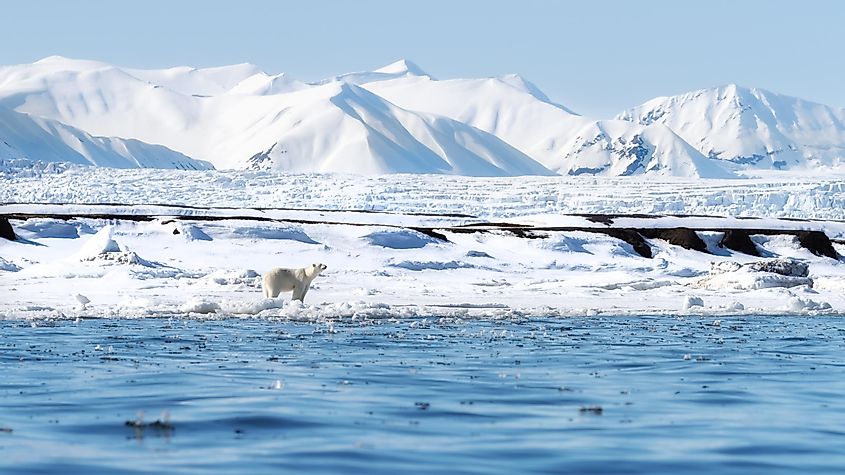
Also referred to as land-fast ice, fast ice refers to the type of sea ice that remains attached to the shoreline or the grounded icebergs and the sea floor along the shoals. Fast ice may either form “in-situ” from the seawater or from the freezing pieces of floating ice to the shore or other anchor sites. This sea ice type ranges in size from a few meters to hundreds of kilometers. Several studies have reported that the fast ice extends to depths of about 65.6 ft in the Arctic Seas, whereas it extends to approximately 32.8 ft in subarctic seas. Fast ice also does not move with currents and winds, unlike drift ice.
Drift Ice
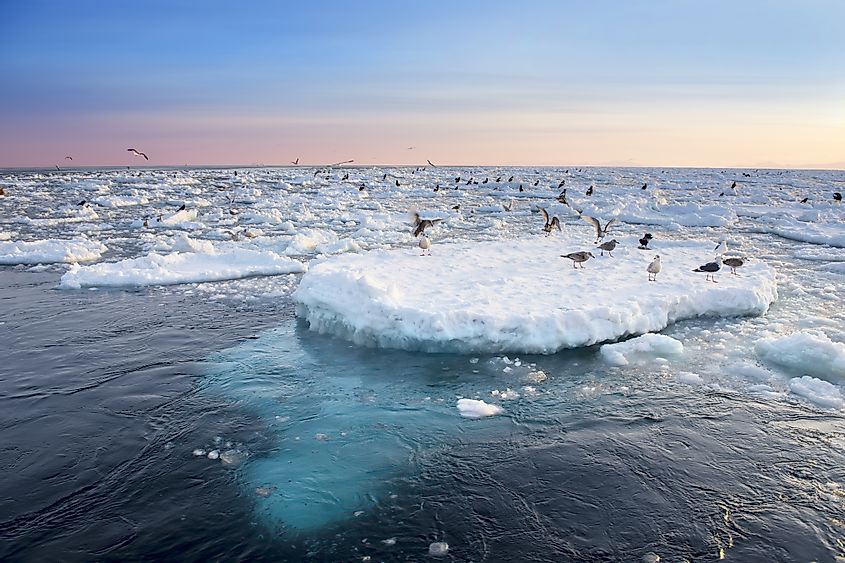
Often referred to as brash ice, drift ice refers to the type of sea ice that is not fastened with any shoreline or other fixed objects. This ice type mainly occurs farther offshore in broad areas and moves freely with winds and currents. Drift ice comprises ice floes, which come in various sizes ranging from small (66 to 328 ft) to giant (more than 6.2 miles). When drift ice moves together as a single large mass, it is known as pack ice, which in turn can pile up to hundreds of meters in thickness to form pressure ridges. The Arctic ice pack and Antarctic ice pack are the two major ice packs that are found in the polar regions of the Earth.
New Ice
The term ‘New Ice’ is generally used to refer to recently frozen seawater that has not yet formed solid ice. New ice consists of frazil ice, slush, and Shuga. This type of ice is made up of ice crystals that are weakly frozen together and only have a distinctive form while afloat.
Nilas
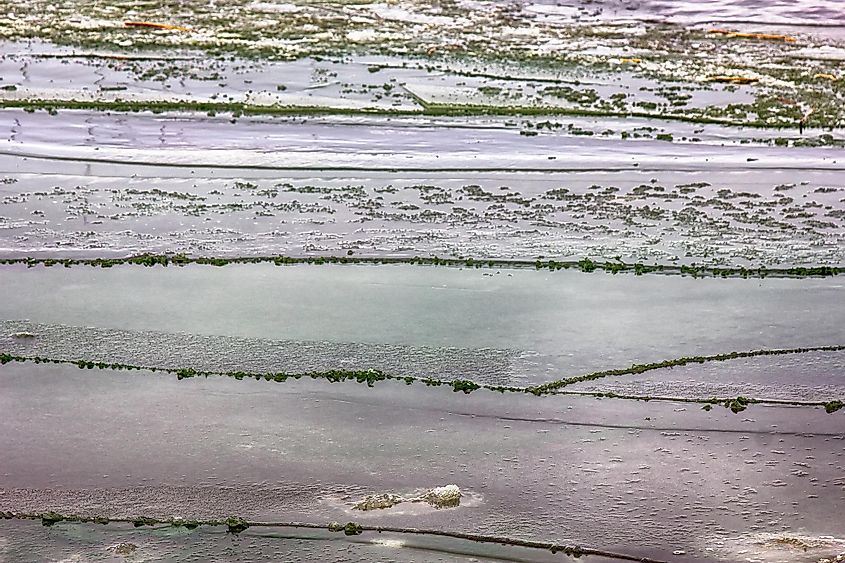
The sea ice crust, which has a thickness of up to 3.9 inches, is called nilas. This thin elastic ice crust quite easily bends without breaking around waves and swells under pressure. The Nilas has a pattern of interlocking fingers and is further subdivided into dark nilas – which has a thickness of up to 2.0 inches, and light nilas, which are lighter in color and have a thickness of more than 2.0 inches.
Young Ice
Young ice ranges in thickness between 3.9 inches to 12 inches and is a transition stage between nilas and first-year ice. Young ice is further subdivided into grey ice with a thickness between 3.9 inches and 5.9 inches; and grey-white ice with a thickness between 5.9 inches and 12 inches. However, young ice tends to break under wave action and is therefore not much flexible as the nilas.
First-Year Sea Ice
First-year Sea ice refers to the ice which grows during the winter and fall seasons but melts away in the spring and summer months. The thickness of this type of sea ice ranges between 0.98 ft to 6.6 ft, making it comparatively thicker than young ice. Commonly observed in the Antarctic region, first-year sea ice is further classified into thin – ranging between 0.98 ft to 2.3 ft; medium ranging between 2.3 ft to 3.9 ft; and thick, which is more than 3.9 ft in thickness.
Old Sea Ice
Old sea ice refers to the ice type that has lived at least a single melting season. This type of sea ice is usually thicker than first-year sea ice and is further classified into two types: second-year ice and multi-year ice. Multi-year ice is more common in the Arctic than in the Antarctic region.
The deformation of sea ice is due to the interaction between ice floes moving against each other. This results in the formation of three distinct features: Rafted ice, Pressure ridges, and hummock. Leads and polynyas occur in open water areas surrounded by sea ice and offer a thorough interaction between the ocean and the atmosphere. Two different types of polynyas are known: sensible-heat polynyas and latent-heat polynyas.
Formation Of Sea Ice
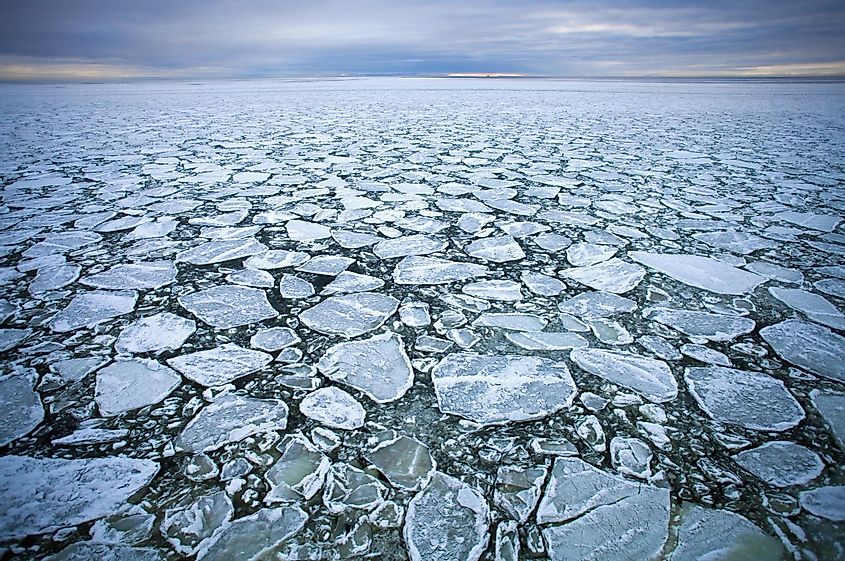
Sea ice is considered a “complex composite” that is primarily made up of pure ice in its different stages of crystallization as well as air bubbles and pockets of brine. In the initial stages, sea ice consists of long, haphazardly oriented crystals. This is known as frazil, and when combined with water, it becomes grease ice. In the presence of calm wave and wind conditions, these crystals amalgamate at the surface and, due to the action of selective pressure, begin to grow downwards, resulting in the formation of nilas. However, during turbulent conditions, the frazil will fuse to form pancake ice by mechanical action. In the Antarctic region, where there is increased snow deposition over sea ice, the snow weighs down the ice, and subsequent freezing leads to the formation of a more granular structure.
During the sea ice formation process, most of the salt content is released into the underlying ocean with the freezing of ice. This excess salt flux results in the upper ocean becoming comparatively denser. During the melting of sea ice, much more freshwater is introduced into the sea, resulting in the upper ocean becoming more stable. It is to be noted that sea ice is formed when the temperature of the saline ocean water dips below its freezing temperature, i.e, about 29°F.
The Yearly Growth And Melt Cycle Of Sea Ice
The annual freeze and melt cycles of sea ice depend on a variety of factors, including variations in atmospheric and ocean temperatures and the yearly cycle of solar insolation. In the Arctic region, the sea ice cover increases during winter, with a bare minimum in September to a maximum extent in February or March. In the Northern Hemisphere, the sea ice extent ranges from about 8 million sq. km in September to 15 million sq. km in March. In the Antarctic region, a bare minimum amount of sea ice is seen during February, whereas the maximum extent is seen during September or October. In the Southern Hemisphere, the sea ice extent ranges from about 4 million sq. km in February to 20 million sq. km in September. Moreover, the presence of sea ice adjoining the ice shelves’ calving fronts influences glacier flow as well as the Antarctic ice sheets’ stability.
Ecology Of Sea Ice
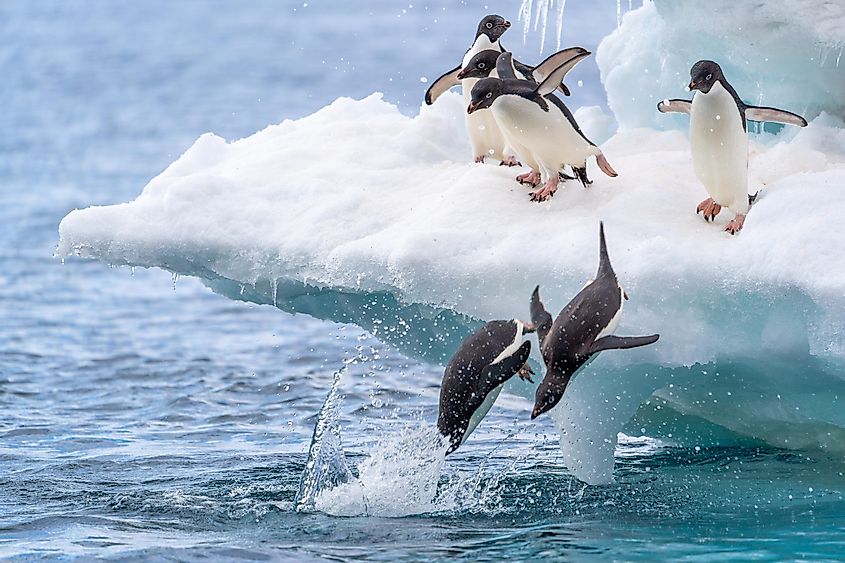
In the Arctic regions, sea ice is considered a “way of life,” with several animals relying upon it for various purposes like food, shelter, and breeding; as well as the indigenous communities that live close to the sea ice depend on it for their livelihoods and cultural identities. Ringed seals, walruses, polar bears, Peary caribou, narwhals, Arctic foxes, and various other animals depend on the sea ice. For some, the sea ice cover serves as an ideal resting and birthing place, a hunting and breeding ground for some, and a foraging ground for others. In addition, the brine-filled channels of the sea ice sustain an array of sympagic organisms like annelids, algae, and copepods. These sympagic organisms provide food for krill and bald notohen fish, which is again, in turn, fed upon by minke whales and emperor penguins. Therefore, a decrease in the amount of sea ice and poor ice conditions will lead to extreme stress for ice-dependent animals like seals, polar bears, Arctic foxes, etc, affecting their livelihoods as well as breeding activities.
Sea Ice And Climate Change
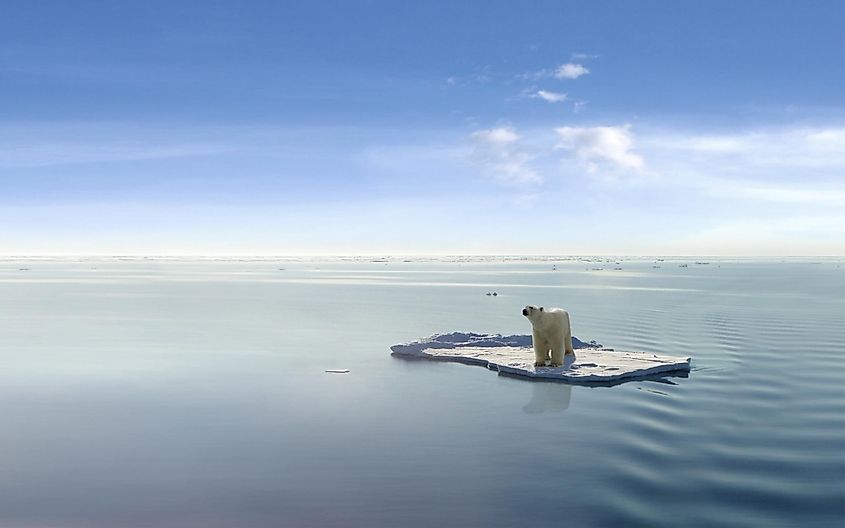
Sea ice plays a crucial role in moderating the global climate and keeping the polar regions cool. The sea ice’s bright shiny surface reflects about 50 to 70% of the incoming solar energy back into space. Moreover, during winter, the snow-covered sea ice reflects more than 90% of the incoming solar radiation and helps to insulate the sea ice, maintain the cooler temperature and delay the melting of ice. During summer, when the sea ice melts, it exposes the dark ocean surface, which reflects only 10% and absorbs the remaining 90% of the incoming solar energy. Therefore, even a slight change in global temperature can significantly affect the amount of sea ice and expedite the shrinking of the reflective surface by global warming. This makes the Earth’s polar regions most susceptible to climate change. In addition to this, the formation and melting of sea ice also play a vital role in the movement of ocean waters. Any change in this will significantly hamper the Global Ocean Conveyor Belt disrupting weather patterns worldwide.
Many scientific studies have revealed the dramatic decline of the thickness and extent of the Arctic’s summer sea ice since the 1980s, particularly during the summer and winter months. The decline of Arctic sea ice was accelerated at the beginning of the 21st century, having a decline rate of approximately 4.7% per decade. In September 2020, it was reported that the Arctic sea ice had melted to an area of 3.74 million sq. km. Although the extent of Antarctic sea ice showed a gradual increase from the start of satellite observations in 1979, it witnessed a rapid decline from the 2016 Southern Hemisphere spring season. The loss of sea ice will have catastrophic consequences worldwide, and researchers predict that if the emission of greenhouse gases continues to rise unchecked, then with the rapid increase of air and ocean temperatures, the Arctic will become ice-free in summer as early as the year 2040.
